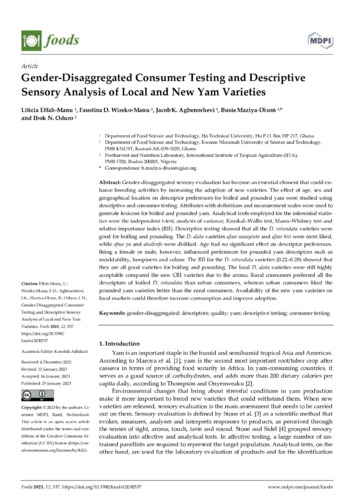Gender-disaggregated consumer testing and descriptive sensory analysis of local and new yam varieties
Abstract
Gender-disaggregated sensory evaluation has become an essential element that could enhance breeding activities by increasing the adoption of new varieties. The effect of age, sex and geographical location on descriptor preferences for boiled and pounded yam were studied using descriptive and consumer testing. Attributes with definitions and measurement scales were used to generate lexicons for boiled and pounded yam. Analytical tools employed for the inferential statistics were the independent t-test, analysis of variance, Kruskal–Wallis test, Mann–Whitney test and relative importance index (RII). Descriptive testing showed that all the D. rotundata varieties were good for boiling and pounding. The D. alata varieties afase soanyinto and afase biri were most liked, while afase pa and ahodenfo were disliked. Age had no significant effect on descriptor preferences. Being a female or male, however, influenced preferences for pounded yam descriptors such as mouldability, lumpiness and colour. The RII for the D. rotundata varieties (0.22–0.28) showed that they are all good varieties for boiling and pounding. The local D. alata varieties were still highly acceptable compared the new CRI varieties due to the aroma. Rural consumers preferred all the descriptors of boiled D. rotundata than urban consumers, whereas urban consumers liked the pounded yam varieties better than the rural consumers. Availability of the new yam varieties on local markets could therefore increase consumption and improve adoption.

